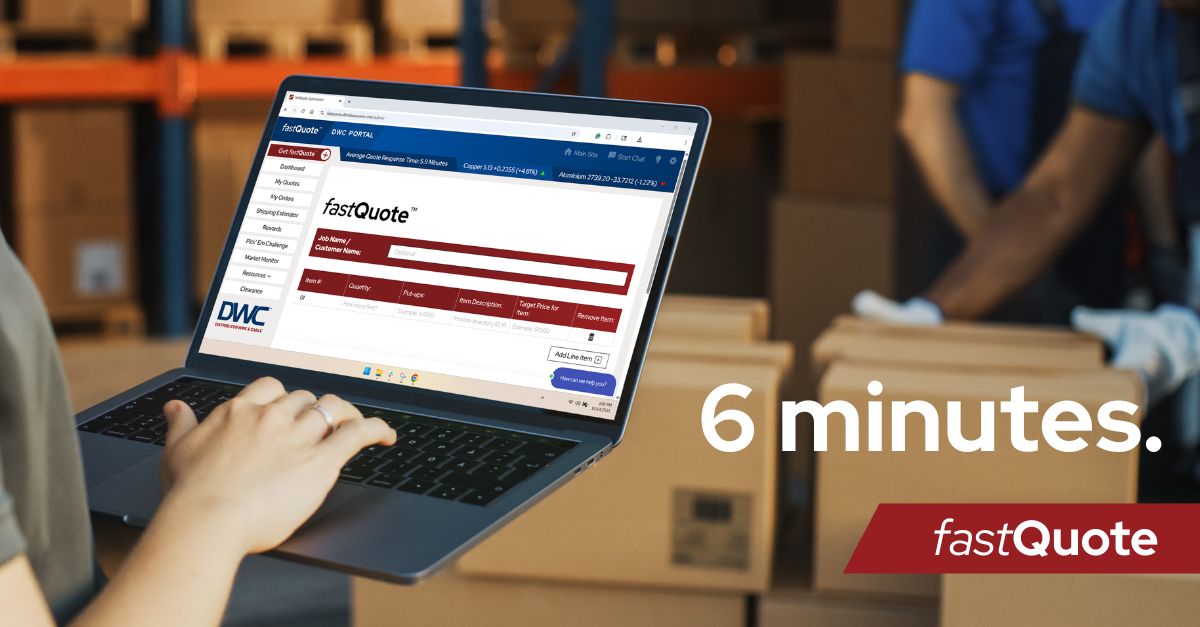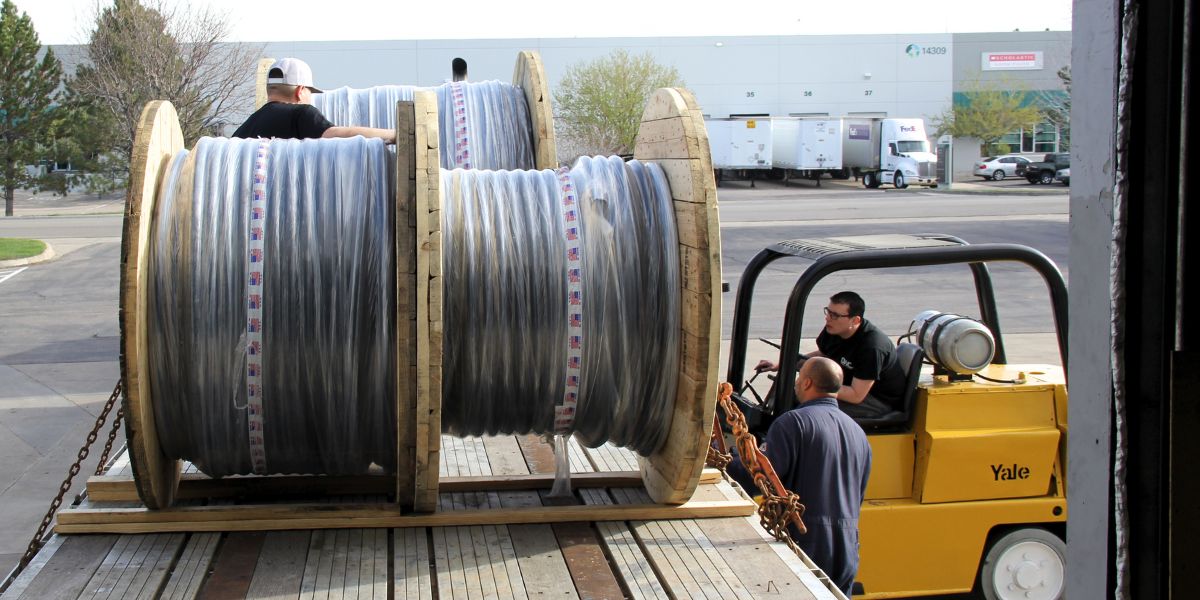The clock is hitting 4:30 PM on a Tuesday, and the internal alarm bell is already ringing. You know the sound well. It’s the ringtone reserved for your best commercial contractor, the one whose account represents reliable, high-volume orders, easily north of $80,000 a month in commodity building wire and fittings.
This time, however, they don’t want pricing on a standard reel of THHN/THWN-2. They need 5,000 feet of 18-pair, 18 AWG SP/OS instrumentation tray cable, a precise 300V construction used for control and monitoring circuits, and they need it yesterday.
It’s for a critical control and instrumentation loop on a new utility-scale solar farm, and the project manager is already asking for updated delivery information to keep the installation on track.
This isn't a simple transactional order. It's a specialty cable fire drill!

The problem isn’t that you don’t know what it is.
You understand that the precise combination of individually shielded pairs and an overall shield is essential for noise rejection in a high-interference environment.
You also know the cable must be tray-rated for NEC compliance. You know the specs perfectly.
The problem is that this specific 18-pair count and the dual-shield configuration aren't standard stock for your branch, and it likely isn't for most large redistributors either.

You check a couple of your main redistributor lines.
The response is predictable: “We can do a 12-pair or a 24-pair, but for that specific 18-pair SP/OS configuration, we need a custom run.”
That leads straight to the reality of Minimum Order Quantities (MOQ). To get a custom run, you're often looking at a 10,000-foot MOQ and a factory schedule that could stretch from several weeks to several months depending on production cycles. If you take the full 10,000 feet, you're tying up capital in 5,000 feet of highly specialized, slow-moving cable you might not sell for a year. If they do have a similar product and have to cut it, you know you'll be charged a steep cut charge on anything less than a full standard reel, which instantly eats into any margin you hoped to capture.
This is the moment the anxiety hits.
First, there is the operational crunch. Time spent calling non-standard suppliers, chasing quotes, and verifying lead times is time taken away from processing your standard, profitable P.O.s.
Second, there is the competitive threat. If you cannot quickly source this specific multi-pair instrumentation cable and provide a sharp, confident quote, your customer will not wait. They will call another supplier who specializes in this exact product, and they will likely get what they need.
The frustration is valid. You deserve a specialty partner whose operating model makes the MOQs and cut charges irrelevant to your quote. The goal is to focus on the contractor's project, not on fighting your supplier's punitive fees.
The real danger isn't the single sale of specialty cable. It’s the loss of confidence. If they have to go elsewhere for the hard-to-source product, they’re suddenly questioning why they rely on you for their commodity business.
A simple, urgent specialty request has the potential to destabilize your entire relationship with a key customer.
Your job, in this moment, isn't to become an engineer or a logistics expert. It's to be the reliable provider who can confidently say “yes” to specialty requests, protecting your margin while keeping your customer moving.
Why This Matters: The Real Cost of Saying “No”
The stress you feel at 4:30 PM isn't just about finding 5,000 feet of highly specialized 18-pair SP/OS instrumentation cable.
It's about protecting your core business and your P&L.
Specialty cable requests like this, while often complex to source, should be high-margin opportunities, but they frequently turn into margin traps instead.
With the right partner, these requests stop being emergencies and start becoming routine margin wins. Without that support, every one of them feels like a roll of the dice.
Specialty Cable: The Highest Margin, Highest Risk
Specialty wire and cable often carry a healthier margin profile than high-volume products like THHN. When you can source a precise, non-standard construction, you have earned the right to maintain a strong margin.
The problem is that operational risks can erode that margin before you even write the quote.

The MOQ Margin Killer: When a redistributor or manufacturer forces you into a 10,000-foot MOQ for a 5,000-foot order, you tie up capital in slow-moving inventory. The remaining footage becomes a long-term carrying-cost liability.
The Hidden Cost of Cut Charges: Cut charges create immediate margin erosion. A 5–10% add-on to cost of goods can erase profitability on a competitive bid. For a branch manager measured on margin protection, this is a real threat. This cost isn't inherent to the product; it's a policy choice. A focused specialty partner views cutting standard reels as routine service, not a penalty.
The True Stakes: Relationship Erosion
Beyond the immediate financial hit, the real stakes lie in your contractor’s confidence.
Your customers aren't just buying cable. They're buying certainty. When a project manager needs that specific 18-pair SP/OS cable to keep their control systems running, they want a distributor who solves problems, not one who passes delays upstream.
Loss of Confidence: If your contractor calls another supplier who specializes in this product and receives the correct cable without MOQ challenges or long factory lead times, two things happen:
They realize you're not their strongest source for specialty products.
They now have a proven relationship with a competing source.
Leakage of Core Business: Once that competing source wins a specialty order, they often win future commodity business. The leak begins with a specialty failure, but it grows into a broader shift in purchasing patterns.
Distributors deserve a partner who makes it easy to say “yes” to specialty products, protecting both margin and customer relationships. You should not have to choose between operational certainty and customer confidence. You need a process that makes specialty sourcing routine, not risky.
That process almost always starts with a master distributor who has already solved the sourcing obstacles you're about to run into.
Common Approaches (And Why They Fail)
When that call comes in for 18-pair SP/OS instrumentation cable, distributors typically default to one of three response patterns. These patterns are understandable but often inefficient and costly.
Approach 1: The Shotgun Sourcing Approach
You start calling five different brokers or manufacturers, hoping one of them has the exact construction on hand.
The Flaw: This drains time from your inside sales team, produces inconsistent pricing, and introduces sourcing risk that you inherit when you quote it forward.
Approach 2: The Large National Supplier Push
You call the national programs with big inventories.
The Flaw: These suppliers excel at high-volume specialty items but often enforce rigid MOQs and universal cut charges. Their operational model focuses on standardized processes, not one-off specialty requests. That rigidity can undermine your intended margin.
This is the core disconnect in the market. The failure isn't yours; the failure is a redistribution model that punishes the exact type of business you need to win. A flexible partner who treats specialty cuts as a service, not a problem, fundamentally changes the economics of this transaction.
Approach 3: The Slow Walk (or Saying “No”)
You quote an extended lead time or decline the request.
The Flaw: The contractor isn't looking for general information. They need material to keep the project moving. A slow walk becomes an invitation for them to test another supplier. Once that happens, you may lose more than the specialty order.
None of these approaches reliably protect your margin or enhance your standing as a reliable problem-solver. A better path requires operational discipline and a partner focused exclusively on specialty speed and flexibility.
Better Path: Operational Confidence for Specialty Cable
The common approaches fail because they either tie up your capital or hand your customer to a competitor. The better path isn't about having the biggest warehouse. It’s about operational efficiency, margin protection, and speed. You need a partner whose entire system is built around saying “yes” to the exact type of cable that large distributors say “no” to or charge extra to handle.
DWC provides the support and structure you need to confidently answer that 4:30 PM call.

1. Replace Sourcing Chaos with a Single, fastQuote Request
Submit the request through the fastQuote portal or contact your DWC Account Manager with all necessary details. This immediately saves hours of manual sourcing and taps into a centrally managed process designed for speed and flexibility. Average quote response time is approximately 6 minutes.
2. Lock in the Order with 24-Hour Speed
Speed protects margin. The longer a quote takes, the more likely your customer is to seek alternatives. DWC’s 48-hour turnaround on standard specialty items and fast handling of complex requests helps you secure the order quickly.
3. Stop Losing Margin to Cut Charges
DWC doesn't charge cut charges on standard reels. If your customer needs 5,000 feet, you buy 5,000 feet. This single policy prevents the margin erosion typical of specialty orders.
4. Leverage Strategic Inventory for Fast Fulfillment
DWC stocks high-demand specialty cable across six CDCs. When the request aligns with in-stock items like MV-105, VNTC tray cable, or aluminum building wire, same-day shipping turns a crisis into a routine transaction.
This four-step process replaces costly, reactionary approaches with repeatable operational discipline centered on speed, margin protection, and clarity.
Real Example: Turning a Long Lead Time into a Three-Day Delivery
Operational theory matters, but real-world execution is where value becomes clear. A distributor in the Southeast needed 1,800 feet of 1000 MCM aluminum Type MV-105 cable for a large industrial project. The contractor required delivery within a week.
The Initial Supplier Response
The distributor first contacted a large national supplier. The response presented the familiar challenges:
The standard reel size was 3,000 feet, and they would not cut it without penalties.
A 15 percent cut charge eliminated nearly all intended margin.
A required internal transfer pushed the lead time to seven business days, missing the contractor’s deadline.
The DWC Operational Solution

The distributor shared the specification with DWC. Within two hours:
DWC located 1,800 feet through an alternative inventory position in our international supplier base.
No cut charge was applied.
The material was pulled, processed, and shipped from the nearest CDC.
Delivery landed at the distributor’s branch in three business days.
By leveraging DWC’s operational model, the distributor avoided tying up capital in unused footage, preserved margin, and strengthened their relationship with their customer. In moments like this, operational clarity and margin protection matter more than any quarterly program.
Making It Work: Turning the Crisis into a Process
The goal is to turn specialty sourcing from a stressful event into a repeatable process that protects your margin while strengthening customer trust.
This doesn't require reorganizing your purchasing structure. It simply requires leaning on a partner focused on branch-level operational realities.
Three Actionable Steps for Monday Morning
Stop Wasting Time on the Shotgun Approach: Transfer the spec sheet and required length to your DWC Account Manager or submit through fastQuote. This channel is built for speed and flexibility.
Lead with Margin Certainty, Not Guesswork: Check DWC first. Eliminating cut charges removes the biggest wildcard in specialty pricing, helping you quote confidently.
Use DWC as Your Specialty Inventory Hedge: DWC’s inventory is an extension of your own risk management. If the cable is specialty, it may be in one of our yards. If it must be sourced, our supplier base and turnaround time position you to win the order quickly, even when factory schedules are long.
You're the expert who keeps projects moving. Your contractor customers rely on your judgment. Specialty sourcing works when your partner prioritizes your operational P&L and protects your margin every time.
Ready to protect your margin and instantly expand your specialty inventory? Contact your DWC Account Manager directly or submit your request through the fastQuote portal now.

